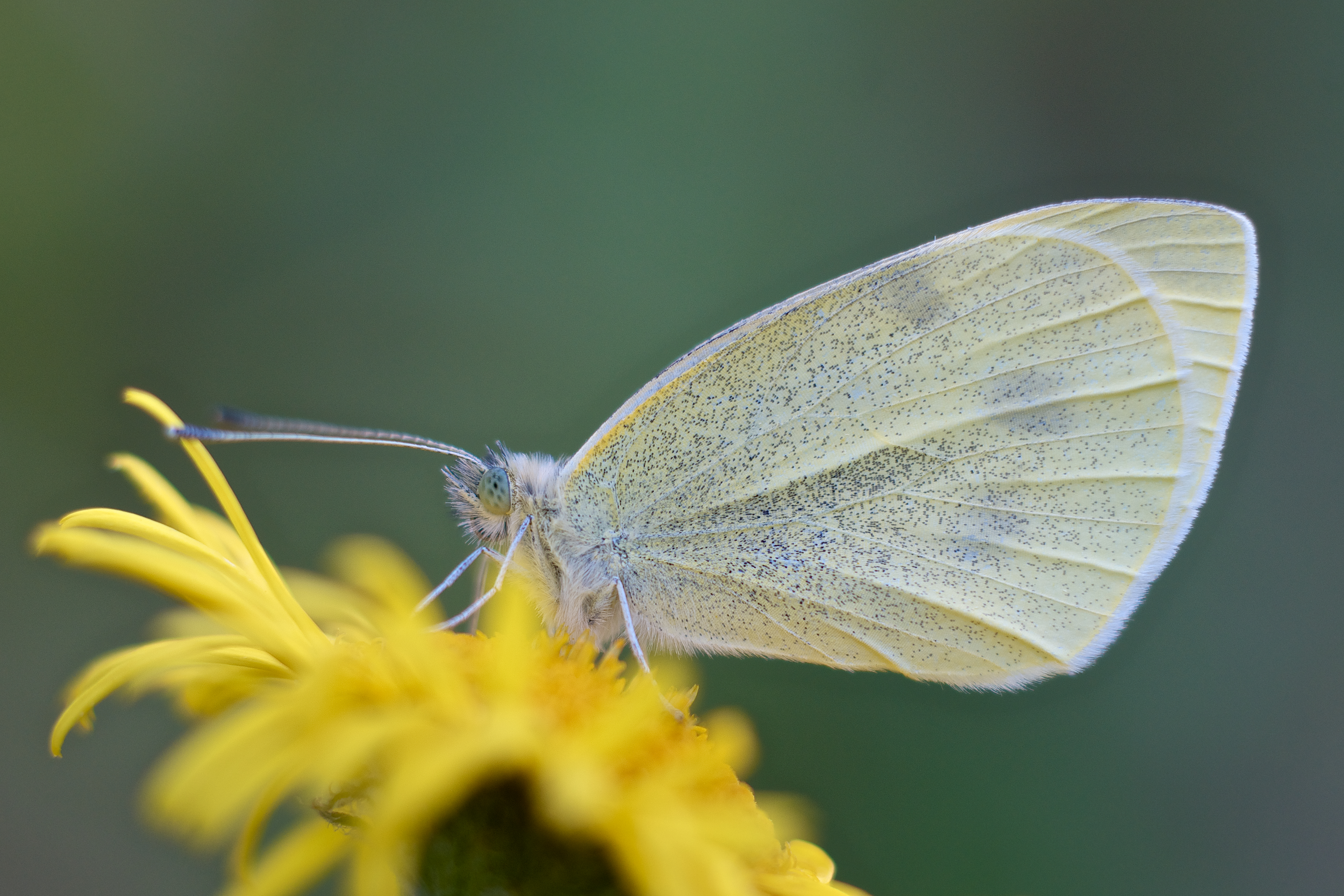Is your garden bursting with colour and life at the moment? It’s that time of year when our flowerbeds put on a show to reward us for all the hard work earlier on in the year. If you’ve been following my monthly tips then you should be enjoying not just the blooms but also the butterflies!
As you relax and enjoy the sunshine perhaps you could observe which of your plants are proving most popular with the visiting wildlife? In my own garden I have noticed Lavender and Perennial Wallflower tend to draw in the white butterflies and Small Tortoiseshell are particularly partial to Buddleia and Asters.
A member of Butterfly Conservation has been in touch recently about an ongoing experiment to discover the best nectar and pollen plants for butterflies, moths and bees. Simon Beavis has worked as a gardener for about 35 years, after initially training with the parks department in Derby in the East Midlands. He has had various allotments over that time, the present one for about 15 years. He has always gardened with wildlife in mind and in previous summers has enjoyed hundreds of butterflies on his patch.
Simon has observed how often bees and butterflies visit different plants on his allotment and given scores out of five, with five being the most popular. He is keen to share this information in order to inspire others. The following is a sample from more than 50 varieties of plants that he has grown.
Cornflower Centaurea cyanus. Annual. 90cm tall. Popular, easy-to-grow plant but a poor performer for attracting bees and butterflies. 1/5.
Ox-eye Daisy Leucanthemum vulgare. Perennial. 30-90cm. Good example of a native wildflower that doesn't appear to be used much by the native wildlife. Planted out in the orchard, they look lovely growing amongst long grass but the insects all but ignore them. 1/5.
Golden Marguerite Anthemis tinctoria ‘Sauce Hollandaise’. Perennial. 50-100cm. Not as good as expected given its daisy-like flowers but fairly popular with hoverflies. 2/5.
Sweet William Dianthus barbatus. Biennial. 30-75cm. Often listed as being good for attracting butterflies but found to be below average. 2/5.
Coneflower Echinacea purpurea. Perennial. 150cm. Listed as a good plant for bees and butterflies, though not top ranked here. Usefully, it continues to flower into the autumn.3/5.
Heliotrope Heliotropium arborescens 'Marine'. Half-hardy annual. 40cm. Old-fashioned, highly-scented bedding plant much loved by the Victorians. Above-average attractiveness for butterflies. Good for pots too. 3/5.
Knautia macedonica ‘Red Knight’. Perennial. 80cm. Plenty of scabious-like flowers and repeat flowering if dead-headed. 3/5.
Lavender. Always listed in the research as being good for attracting bees, possibly because it's so widely grown, but there are better plants for this purpose. The English types are hardier than the French ones. 3/5.
Common Yarrow Achillea millefolium (Many cultivars including ‘Summer Pastels’). Perennial. 20-100cm. Excellent for butterflies as the flower shape is so easy for them to land on. 4/5.
Scabiosa atropurpurea ‘Tall Double Mixed’ and ‘Oxford Blue’. Annual/short-lived perennial. 90cm. Will last two years but beyond that will become woody. Never-ending supply of flowers if dead-headed regularly. Above average for attracting bees and butterflies. 4/5.
Strawflower Helichrysum bracteatum monstrosum ‘Eternity’. (Also known as Xerochrysum bracteatum) Annual. 50-100cm. They need staking but come in a variety of colours and make lovely dried flowers. They are loved by bees and butterflies. 4/5.
Verbena bonariensis. Perennial. 120cm. Easy to grow from seed and also self-seeds. Popular with bees and butterflies, especially the whites. 4/5.
Butterfly bush Buddleia davidii. A non-native shrub but well known as the best plant for attracting butterflies. Lots of cultivars available these days but the original apparently has the best scent for doing the attraction job. Remember to deadhead after flowering, to prevent the seed spreading beyond your garden. 5/5.
Field Scabious Knautia arvensis. Perennial. 30-80cm. Native wildflower that also does very nicely in the garden. One of the best plants for attracting butterflies and popular with the bees too. Star performer. 5/5.
Perennial Wallflower Erysimum ‘Bowle's Mauve’. Perennial. 50cm. Must-have plant that flowers non-stop. Short-lived, but cuttings take really easily. Butterflies use it on the allotment from the earliest Orange-tips in spring to the last Red Admirals in autumn and the bees love it too. Star performer. 5/5.
Wild Marjoram Origanum vulgare. Perennial. 30-50cm. A useful herb and excellent for bees and butterflies - especially popular with Gatekeepers. Star performer. 5/5.
You can read more about Simon’s plant experiments in his blog http://simonsallotment.blogspot.co.uk/
Do you agree with the rankings above? I would be really interested to know the best plants for butterflies from your experience too. You can comment below if you would like to share your favourites.
Enjoy the summer.
Happy Gardening!
The Secret Gardener


